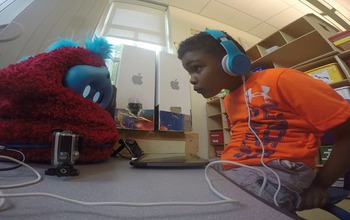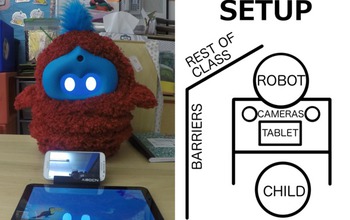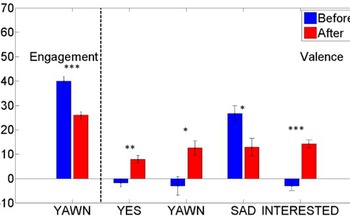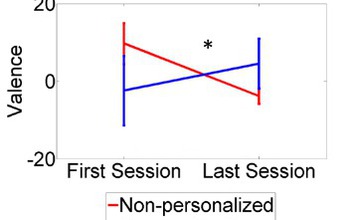All Images
News Release 16-026
Robot learning companion offers custom-tailored tutoring
New social robot from MIT helps students learn through personalized interactions
This material is available primarily for archival purposes. Telephone numbers or other contact information may be out of date; please see current contact information at media contacts.

A child plays an interactive language learning game with Tega, a socially assistive robot.
Credit: Personal Robots Group, MIT Media Lab
Download the high-resolution PNG version of the image. (3.3 MB)
Use your mouse to right-click (Mac users may need to Ctrl-click) the link above and choose the option that will save the file or target to your computer.
Tega is a new platform, developed at MIT, for research in socially assistive robotics. The Tega design expands on MIT's past work with squash-and-stretch style robots like Dragonbot but introduces new capabilities and a more robust design, with the intention of a three-month deployment for interaction with children.
Credit: Personal Robots Group, MIT Media Lab

The robot was set up in a corner of the classroom, behind a low barrier, for the study.
Credit: Personal Robots Group, MIT Media Lab
Download the high-resolution PNG version of the image. (2.3 MB)
Use your mouse to right-click (Mac users may need to Ctrl-click) the link above and choose the option that will save the file or target to your computer.

There was significant change in children's engagement and valence following non-verbal robot behaviors.
Credit: Personal Robots Group, MIT Media Lab
Download the high-resolution PNG version of the image. (38.9 KB)
Use your mouse to right-click (Mac users may need to Ctrl-click) the link above and choose the option that will save the file or target to your computer.

From the first session to the last session, positive valence increased in the personalized condition but decreased in the non-personalized condition.
Credit: Personal Robots Group, MIT Media Lab
Download the high-resolution PNG version of the image. (23.2 KB)
Use your mouse to right-click (Mac users may need to Ctrl-click) the link above and choose the option that will save the file or target to your computer.


